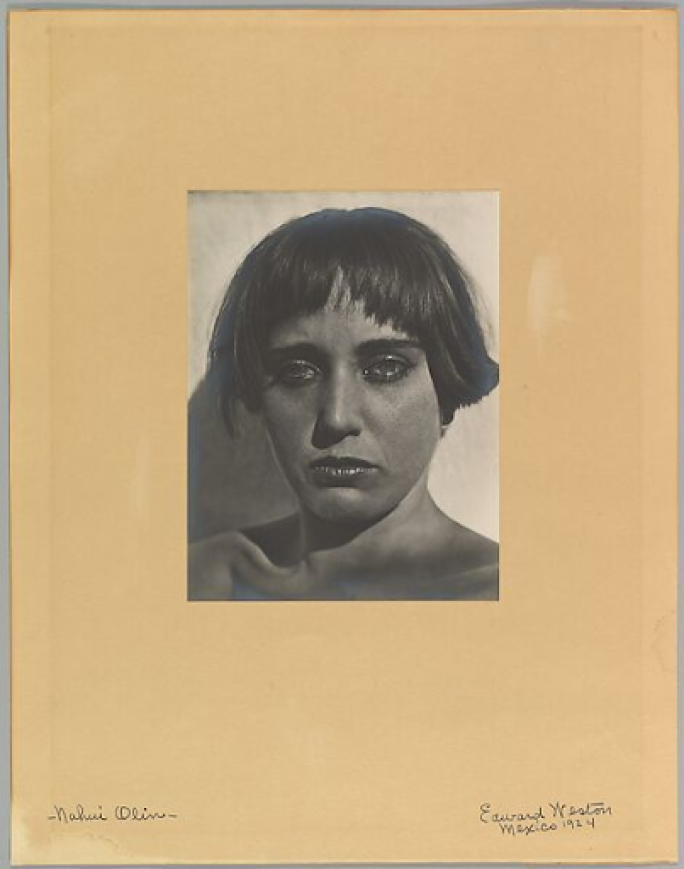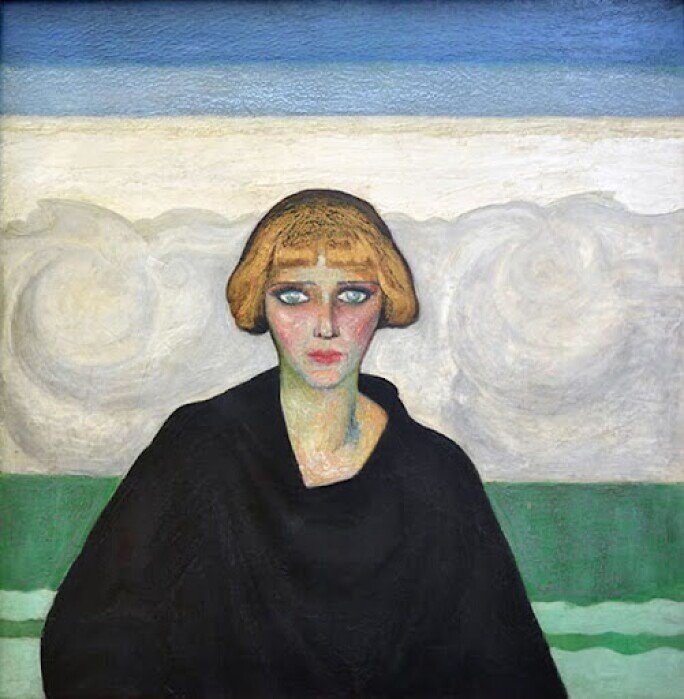I
n Nahui Olin y Agacino frente al mar, the artist captures an intimate moment with her lover Eugenio Agacino, rendered in bold brushstrokes and searing color against a backdrop of sea and sunset. Painted shortly before her lover Eugnecio Agacino’s unexpected death in 1934 — the painting stands as a poignant tribute to a passionate relationship. After his death, Olin withdrew from public life, vanishing from the cultural scene until her death in 1978. Radiating sensuality and emotional urgency, this work exemplifies the expressive intensity that defines Nahui Olin’s most powerful work.
Born in 1893 to a diplomat in exile, Nahui Olin—born Carmen Mondragón—lived a life marked by defiance, romance, and artistic transformation. A poet, painter, essayist, and muse, she moved between Paris, Spain, and Mexico, forming friendships with the likes of Pablo Picasso and Henri Matisse. As she settled down in Mexico in 1921, she modeled for Diego Rivera, Edward Weston, and Jean Charlot, celebrated for her beauty and presence—but she was always more than a subject. Fiercely independent and intellectually driven, Olin blurred the lines between artist and muse, embracing her sexuality and creativity with fearless intensity.

“This is not someone who is simply painting how children paint; rather she’s approaching it through these themes of synthesis and science, but as seen through her memory and her experiences. I like to define it in that way because it’s much more complex that simply calling it ‘naive.’ ”
Her paintings are vivid, symbolic, and deeply autobiographical — lush compositions that mirror her tempestuous life. Nahui Olin y Agacino frente al mar was likely painted after the end of her passionate, volatile relationship with the painter Gerardo Murillo, also known as Dr. Atl. Their love affair, though turbulent and public, marked a creative high point for Olin. During this period, she refined her signature style: dynamic brushwork, saturated color, and a charged emotional energy. It was during this time that she adopted the name Nahui Olin, derived from the Aztec term for “Four Movement,” a calendar symbol associated with cosmic motion, transformation, and the cyclical nature of creation and destruction — a gesture of her own radical self-reinvention.

In the present work, Olin depicts herself with her signature bob and striking green eyes, tenderly entwined with her lover, Eugnecio Agacino, against a backdrop of an ultramarine sea and fiery sunset. Painted in 1934, the piece radiates sensuality and longing, a testament to her emotional depth and artistic clarity.
“I am a misunderstood being who is drowned by a volcano of passions, of ideas, of sensations, of thoughts, of creations that cannot be contained in my breast, and so I am destined to die of love,”